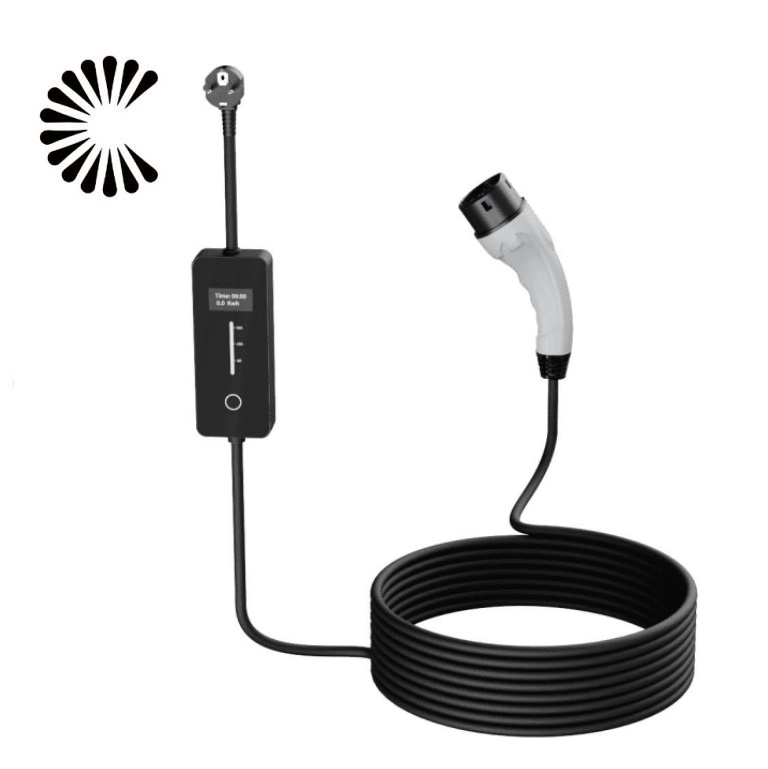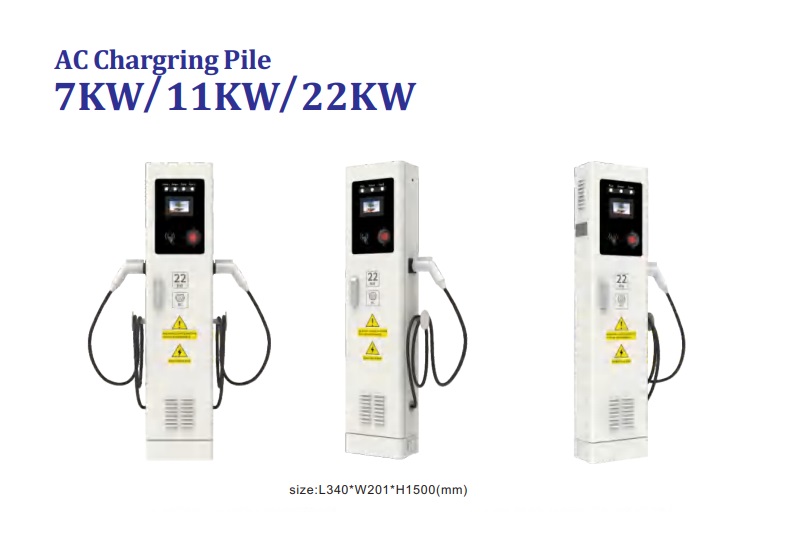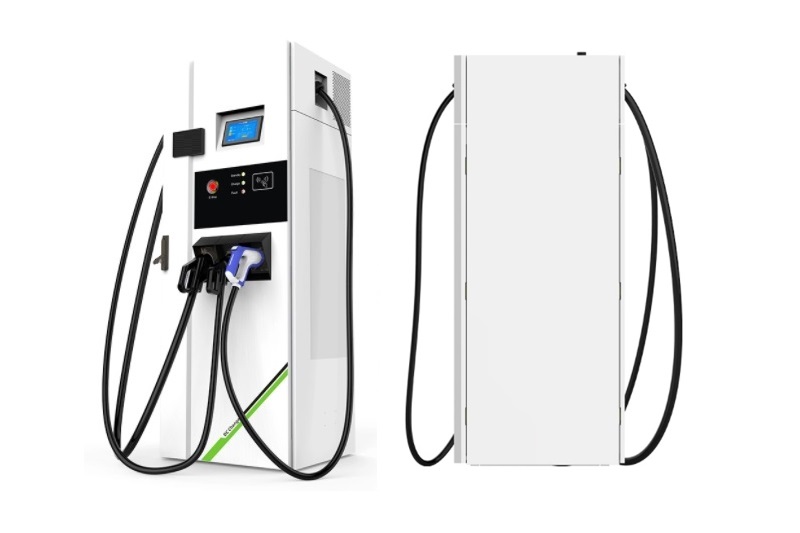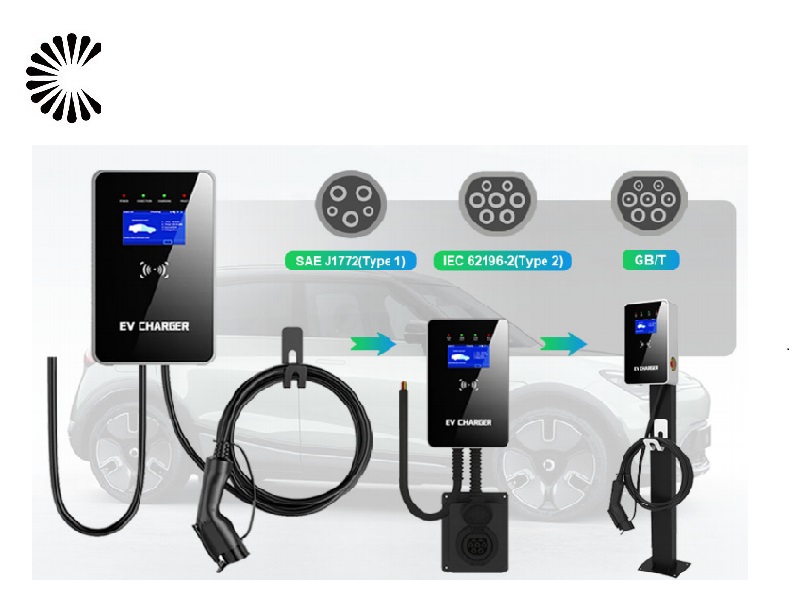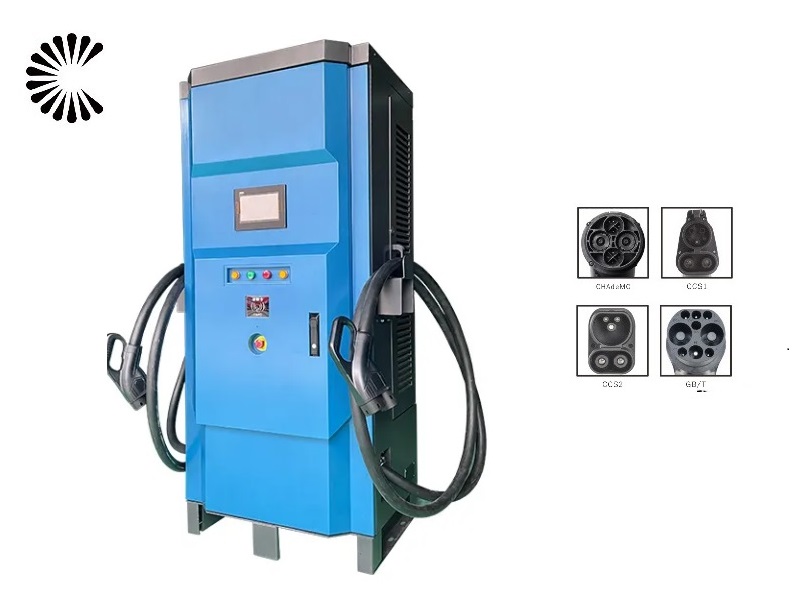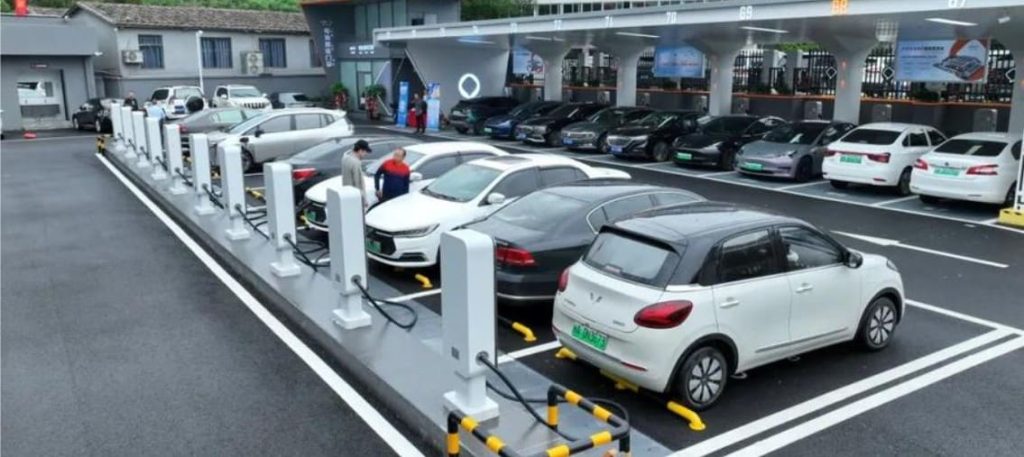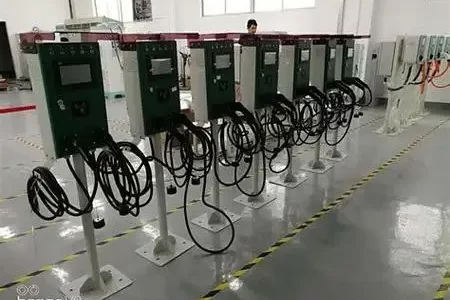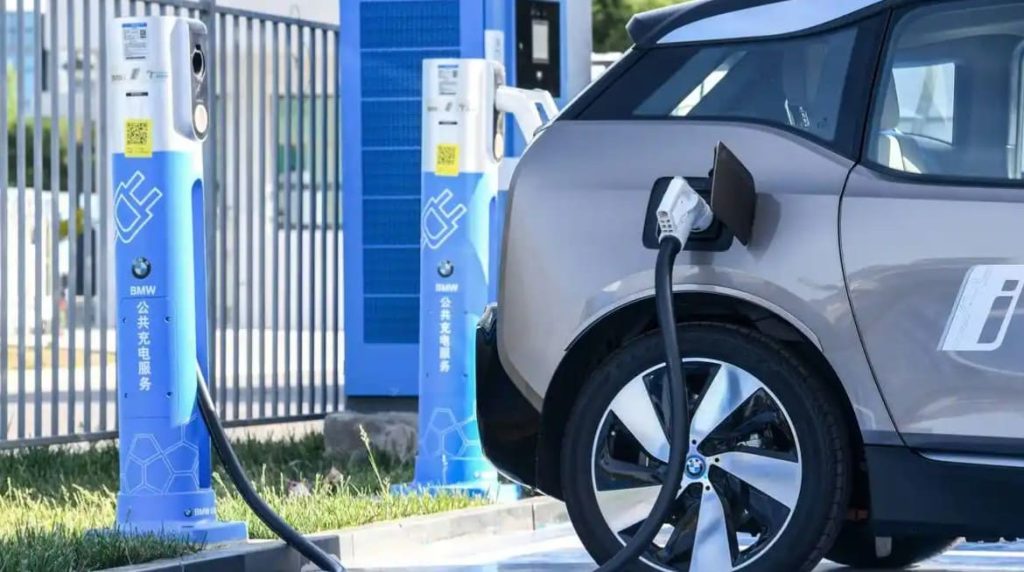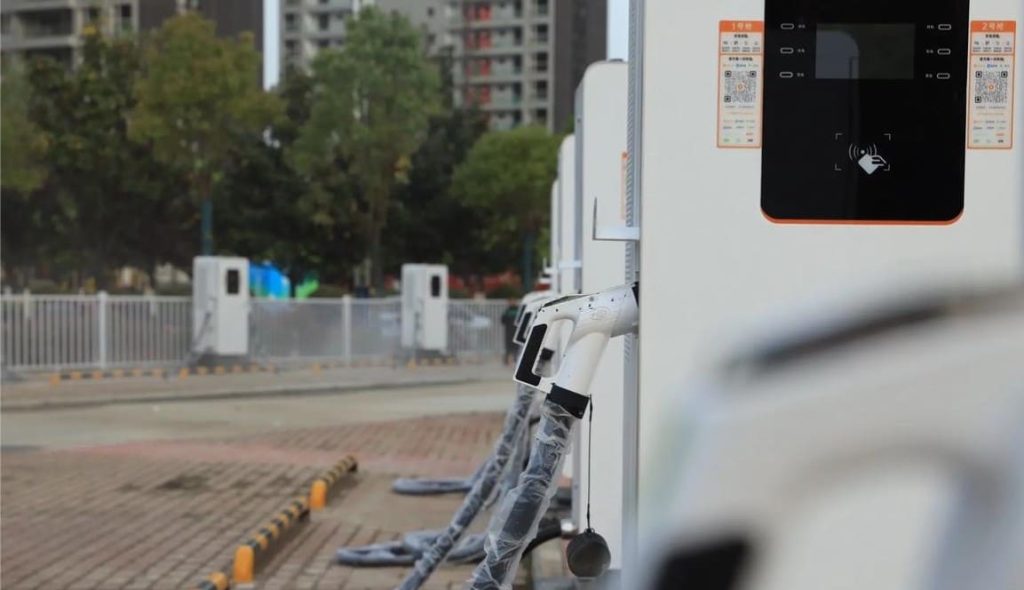AC ev charger
What is AC EV Charger:
AC ev charger usually refers to a technique or process of charging using Alternating Current (Alternating Current). The direction of AC power changes periodically with time. This variability makes AC power relatively efficient when transmitted over long distances, and the voltage can be changed through the transformer to adapt to different equipment requirements. usually refers to a technique or process of charging using Alternating Current (Alternating Current). The direction of AC power changes periodically with time. This variability makes AC power relatively efficient when transmitted over long distances, and the voltage can be changed through the transformer to adapt to different equipment requirements.

What is DC EV Charger?
DC EV Charger is the abbreviation of “direct current electric vehicle charger” As all know, the electric power provided by the grid is always AC. So, the difference between AC charging and DC charging is the location that AC power is converted inside of the EV or outside of the EV. AC chargers with converter inside of the EV, while, DC chargers with converter inside of the charger. That is to say, when we charging with DC charger, the electric power is charged directly to the EV battery rathter than through the converter of EV. Therefore, normally speaking, DC chargers are bigger, faster. They are widely used in public business commercial charging station rather than home. That is to say, AC charger more suitable for home use, but DC in most circumstances they are for commercial public application. The maximum charging power a battery can receive depends on two factors – its specifications and the capabilities of the fast charger. Generally, EV batteries use 400V, but more recently modern EVs use 800V+ architecture, such as Porsche Taycan, Audi E-Tron GT, Hyundai Ioniq 5, Kia EV6 and Lucid Air. These cars can achieve up to 350 kW of charging power using their respective 800V chargers.

ac or dc ev charger – Which to choose ?
There are two types of charger that can be used in electric cars. They’re called alternating current (AC) and direct current (DC) power. Because of the power that comes from the grid is always AC. But, batteries in our vehicles, only with DC as power storage. This is the reason why that of majority that our EV have such electricity converter which built into the plug.
What is AC EV Charger?
AC EV Charger is the abbreviation of “alternating current electric vehicle charger”. As we all know actually it’s a converter to change to DC from AC Current. This is the most common charging method for electric vehicles today.

Difference Between AC And DC?
Difference Between AC Charger and DC Charger:
Charging piles are divided into two types of AC and DC, and there are some key differences between them:
Charging method:
The AC charging spot uses an on-board charger (OBC) to convert alternating current into direct current to charge electric vehicle batteries. It is usually installed in places such as residential parking lots because of its small power and slow charging speed, but the installation cost and technical structure are relatively simple.
The DC charging station directly provides direct current to the electric vehicle power battery to achieve fast charging. It is usually installed in charging stations or public charging stations beside highways because of its large power and fast charging speed, but the installation cost and technical structure are relatively complex.
Power and charging speed:
The power of AC charging pile is generally about 7kW, and it takes 6-8 hours to fully charge.
The power of the DC charging pile can range from 60kW to 120kW or even higher, and it only takes 30-40 minutes to fully charge.
Volume and installation:
Dc charging pile because of the internal modules, large volume, installation and construction is more troublesome, high requirements for power supply.
The AC charging pile has simple internal structure, small volume, relatively simple installation cost and technical structure.
Usage scenario:
Ac charging pile is suitable for family, community, office building and other daily scenes.
Dc charging pile is suitable for public charging stations, highway service areas and other scenes to meet some temporary and acute charging needs.
Cost:
The construction and maintenance cost of AC charging pile is generally lower than that of DC charging pile.
The construction and maintenance cost of DC charging pile is generally higher than that of AC charging pile.
To sum up, which type of charging pile to choose depends on the specific needs and use scenarios of users. For users who need fast charging, DC charging pile is a better choice; For users who want to save costs and want to use in the home or cell, AC charging piles may be more suitable.

| DC Charging standard | DC Output power |
| CCS1 | 180kW/150kW/120 kW/ |
| CCS1 | 90 kW /60 kW/30 kW |
| CCS2 | 180kW/150kW/120 kW/ |
| CCS2 | 90 kW /60 kW/30 kW |
| GB | 180kW/150kW/120 kW/ |
| GB | 90 kW /60 kW/30 kW |
| CHAdeMO | 60 kW/30 kW |
| AC Charging standard | AC Output power |
| Type 1 cable | 7 kW |
| Type 2 cable | 43 kW /22 kW/7 kW |
| Type 2 socket | 22 kW/7 kW |
| GB AC cable | 43 kW /22 kW/7 kW |


AC dC charging at home
ac charging pile station
type 2 ac charger for ev
ac ev charger for Sale
dc charger
Application
They are suitable for occasions such as city special charging stations that provide charging for bus, taxi, public service vehicles, sanitation vehicles,logistics vehicles, etc.; city public charging stations that provide charging for private cars, commuter, bus; intercity highway charging stations and other occasions that need special DC fast charging. EV Bus station, Highway gas, sevice station, Parking garage, commercial operators, EV infrastructure operations and service providers, EV dealer workshops.

Here we list down some of application scenarios:
- Business organizations: Supermarket, Shopping mall, Hotel, Restaurant, Pharmacy
- Non-profit organizations: Airport, Railway / bus station, Exhibition, Museum, Hospital, School, Convention center, Lottery station, Government affairs center
- Financial organizations: Bank, Insurance company, Foundation, Security company
- Entertainments: Movie theater, Club, Bar, Salon, Gambling house
Suitable for Car Brands:
Almost all the electric car, minibus, bus, van vehicles are suitable. Please contact with our sales team to confirm the right models.


















Transportation
In the course of transportation, the charger should be packed firmly and intact ina solid wooden packing box, and the direction of loading and unloading should be marked. The charger should not be stored and transported upside down. In the course of transportation, corresponding tightening measures should be taken to avoid strong vibration and bump damage to the outer packaging of equipment. After arrival of the goods, user should check whether there is any damage. If there is any transport damage, user should consult with the transport party or our ompany to solve it. Check whether the contents in the box are in conformity with the packing list immediately after opening the box. The packaged equipment should be stored in the room where the relative humidity is less than 80% and the ambient air temperature is -20℃ to +55℃. Storage places should be dry, clean and airy, and can prevent the invasion of harmful gases. It is strictly forbidden to store corrosive articles in the same place. Note: It is strictly forbidden for non-professionals to disassemble equipment components.

Certification

Our Factory have certifications such as CE ISO Certifications. TUV /UL /CE Certificated for Overseas on cable and wire.
Why choose us
- Decades of Experiences: As a Chinese academy of sciences park high-tech enterprise and manufactory, our factory establised since 2002, with over 10 years factory development, our factory became famous brand in China. We believe new energy is the future, better to environment and more economical to our life. We are an integrated hi -tech electronic company. “Passion, Honesty, Sound service, Keen cooperation and Development” are our goals. We are here expecting friends all over the world!
- Various Charging Products: Full range of charging products as well as charger accessories. Provide full support to customer after-sale services. Most of the model of produts are able to be customized.
- For all the products that we shipped have 1 year warranty period as well as life time spare parts and accessories with competitive price .
- Accept customized OEM ODM products.
- Experienced foreign trade team to handle the shipment and after-sale services.
- Efficient and fast supply chain.
Showcase

Maintenance
- Charger body is easy to be fixed with anchor bolts to prevent it from inclining
and dithering due to external and human factors. - Shading and rainproof measures should be taken for chargers. It is suggested
to install shelters outdoors. - Check regularly whether all bolts in chargers are tightened, whether the connecting wires are loosened or not, or the connection is not firm, etc.
- Check for short circuit.
- Check whether the emergency stop button is available.
- Attention should be paid to lightning protection to ensure effective shielding
and reliable grounding of chargers. - When in use, the output voltage and current of the charger should be controlled within the nominal range to ensure that the charger works in the state of maximum efficiency.
- When the charger stops using, the charging output should be stopped first, then the cable should be wrapped and put back in place.
Note: During the transportation, the chargers should be packed firmly and the
direction of loading and unloading should be marked. It is forbidden to store and
transport chargers upside down. Corresponding tightening measures should be taken
to avoid strong vibration and turbulence damage to the outer packaging of equipment.
Factory Introduction
By virtue of high-quality products and services, our factory has won many awards such as “Gazelle Enterprise”,” Excellent Software Demonstration Enterprise”, “Intelligent Manufacturing Pilot Demonstration Enterprise”, “Little Giant Enterprise in Science and Technology”. etc. It has also wined awards as “2017 Best Charging Solution Supplier”, “2018 Top 10 Charging Pile Brands in China Green Logistics Industry”,2019 Top 10 Charging Pile Brand Award, “2020 Top 10 Influential Brands in China Charging Facility Industry” and many other industry awards. Meanwhile factory has successfully passed the assessments as “safety production tandardization of the three-level enterprise”, “international ISO full series management system certification” and other authoritative certification.
| Certificate: | CE RoHS FCC Certificate | Warranty: | 12 Months |
| Input Voltage: | 110V-380V | Output Voltage: | 0-750V |
| Working Temperature: | -25℃-55℃ | Application: | Home Use/Commercial Use |
| OEM Service: | Color,Logo,Package, cable length, cable color | Supply Ability : | 4000 Piece/Pieces per Week |
| Packaging & Delivery: | Shanghai Port | Capacity | 4000 Piece/Pieces per Week |
| Lead Time: | Quantity(units) 1 – 5 5 working days | Factory Type | Supplier |
| Country / Region | China/Gungdong | Main Products | EV Charging Station, EV Charging Cable, EV Charging Connector |
| Factory employees | Over 100 people | Total Annual Revenue | Above US$100 Million |
| Main Markets | Europe South America | Connection: | type 1 or 2 plug |
| Mass production price | Negotiable | Charger Capacity | 3.5kw~480kw |
| Current | DC/AC | Plug type | Type 1,2,CHAdemo/CCS-2/CCS-1 |

Contact Us
Similar Questions about AC EV Charger
Why is dc charging faster than ac
The differences between AC charging pile and DC charging pile are mainly as follows:
1. Charging time.The most essential difference between slow charge and fast charge is the charging time. Generally, it takes 1.5~3 hours to charge the power battery with DC charging pile.The charging with AC charging pile usually takes 8~10 hours to fully charge.
2. Vehicle charging machine.If AC charging pile is used to charge the power battery, it needs to be charged by the on-board charger on the car, while DC charging pile can be directly charged, which is also the biggest difference with DC charging.
Dc charging pile is commonly known as “fast charge”, which is fixed outside the electric vehicle and connected to the AC grid. It is a three-phase four-wire 380V stable frequency of 50HZ and can provide DC power for non-on-board electric vehicle power batteries.The AC charging pile, also known as “slow charge”, but the AC charging pile has no charging function, and must be connected to the vehicle charger to charge the electric vehicle, which only plays a role of power control.
Difference between ac and dc

1.The magnitude and direction of alternating current change periodically with time.Direct current does not change direction.
2. Ac has no positive and negative poles, DC positive and negative poles can not be interchangeable.
3 storage characteristics: DC can be stored, such as a variety of batteries, strong mobility.Alternating current cannot be stored and can only be generated as needed.
Range per hour of charging
Modern electric cars have gone further than their predecessors, but the question remains: How far can you go on a single charge?Electric vehicle (EV) range varies according to several factors we will explore here.
How many miles can an electric car go on a full charge?
According to the Plug-in Hybrid and Electric Vehicle (PHEV) Research Center at the University of California, Davis, the average figure for how far you can go on a single charge is 250 miles (as of this writing in June 2022).Some models will get less mileage, and some models can get 350 miles or more.But what accounts for the difference in scope?Why don’t all electric cars get the same mileage on a charge?
The answer depends on factors such as the size of the EV’s battery and how old the vehicle is.Driving behavior and weather also play a significant role in how far an EV can go on a charge.
Data collected by the EV database shows that there is a wide gap between the minimum and maximum average range of an EV on a single charge.At the lowest end of the spectrum is the Smart EQ Forfour, which has an average practical range of 55 miles but can reach 90 miles in ideal conditions.At the high end, the Lucid Air Dream Edition R has an estimated average range of 430 miles.
At the time of writing, the average range of most mid-range vehicles is between 200-300 miles.The U.S. Department of Transportation (DOT) estimates that people drive an average of 13,476 miles per year or about 36 miles per day, and even mid-range EVs are enough to meet typical daily driving needs.
It’s worth noting that, at the time of writing, almost all of the most numerous EVs on the market are expensive and probably not what most drivers deal with in terms of range.Most people buying into the electric vehicle market today will get a figure closer to the average of 250 miles at the UC Davis research center.As battery technology advances, we are likely to see an increase in average range over the next few years
Another important caveat is that these range estimates apply to all-electric, battery-powered vehicles.Hybrid cars that switch fuel between the tank and the battery will get higher average mileage.
What will affect the range of an electric car?
Multiple variables, from weather to battery size, affect the range of an electric car.
Cold weather, for example, drains the batteries of electric cars more quickly because the liquid components thicken and the reactions that generate electricity slow down.Built-in battery heating and cooling systems help alleviate this problem, but it’s something potential EV buyers should know about.Electricity is also needed to run a car’s heating system, because electric motors do not generate their own heat as gasoline engines do.
The size of an electric car’s battery pack is crucial to its range.The larger the pack, the more lithium-ion batteries are used to store electricity to power the engine.The more energy you store, the longer the car will go.Ev battery pack capacity is measured in kilowatt-hours, and the larger the number, the greater the capacity.The Lucid Air Dream listed above has a battery capacity of 118kWh, while the Smart EQ Forfour has a battery pack capacity of 16.7kwh.The Lucid Air’s larger battery pack gives it more capacity and therefore longer range.
Driving habits also affect range.A lot of highway driving or rapid acceleration will drain the battery faster, because those things require extra power.Stop-and-go traffic, by contrast, gives regenerative braking a chance to regain some of the lost energy.
Level 3 ev charger
Level 3 charging, also known as DC quick charging, is the fastest way to charge your vehicle.The Hyundai IONIQ 5 is used as an example to show how fast a battery can be charged using L3.The L3 charger can charge the IONIQ 5 battery from 10% to 80% in about 18 minutes.It’s great, perfect for long trips that require hitting the road as soon as possible.
Ultra-fast charging like this can only be done using public chargers, so you won’t be able to install one of these in your home.And, to be honest, installing one of these chargers in your home is pointless.You’d better use the public one and go home.
Should you drive your electric car empty?
You should definitely avoid completely draining your EV’s battery.Doing so can negatively affect the battery’s capacity and shorten its life.The optimal charging range for electric vehicle batteries is usually between 20 and 80%, so try to stay within that range.
Thankfully, many modern electric cars come with alarms that tell you when your battery is low.Some higher-end products will even alert you when you’re near a charging station so you can recharge immediately.You can usually see how many miles you have left to go before the battery dies, so you can recharge well before you get stuck.
Unlike gasoline cars, where you can sometimes go a few miles further from the tank when the gas light is on, electric cars finish when it reaches zero.When this happens, you will be towed to a charging station, so please avoid letting your battery die.A full day or a night at home can go a long way toward eliminating this problem.
How do you know what range to look for in an electric car?
To know what range you need, count the number of times you drive each day and go from there.Can the average range of the electric vehicle you want meet this demand?If so, this is a good candidate.
Consider what charging infrastructure is near you.Can you use public charging stations?Can you top up at work?Charging at home at night?Longer range doesn’t make much sense if it’s too hard to charge where you live.
What’s the climate like where you live?If it is very hot or very cold, you need to take this into account as it will at least reduce your range.
Finally, know that an electric car’s battery degrades over time, which means it loses some of its original range.Most likely it won’t be a huge number – it’s usually 5% in the first few years – but it will happen.Take the original estimate range, calculate 10 percent, and subtract that number from the original range to see if it still meets your needs.
These factors together should give you a good idea of whether range will be an issue for you when driving an electric vehicle.People often find they can get around just fine in an electric vehicle, but it’s best to do your homework to avoid unpleasant (and expensive) surprises.
Related Products
Related Articles
Contact Us
Frequently Asked Questions (See More FAQ)
-
Are you a factory or trading company?
We are a professional manufacturer of new and sustainable energy applications for over 20 years.
-
What is the warranty?
Warranty period is 12 months. In this period, we will supply technical support and replace the new parts by free,customers are in charge of delivery.
-
What is the packing method?
Generally, we pack our goods in brown cartons. If you have legally registered patent, we can pack the goods in your branded boxes after getting your authorization letters.
-
What is your terms of payment?
T/T 50% as deposit, and 50% before delivery. We’ll show you the photos of the products and packages before you pay the balance.
-
What is your terms of trade?
EXW, FOB, CFR, CIF, DAP,DDU,DDP
-
How about your delivery time?
Generally, it will take 3 to 7 working days after receiving your advance payment. The specific delivery time depends on the items and the quantity of your order.
-
Can you produce according to the samples?
Yes, we can produce by your samples or technical drawings. We can build the molds and fixtures.
-
What is your sample policy?
We can supply the sample if we have ready parts in stock, but the customers have to pay the sample cost and the courier cost.
-
Do you test all your goods before delivery?
Yes, we have 100% test before delivery.
-
Is a Tesla charging AC or DC?
Teslas are equipped with onboard chargers that can handle both AC (alternating current) and DC (direct current) charging.
When you charge a Tesla at home or at most public charging stations, you are using AC charging. The AC power is supplied to the Tesla’s onboard charger, which converts it to DC to charge the vehicle’s battery. This is the most common method of charging for electric vehicles, including Teslas.
However, Teslas also support DC fast charging, commonly referred to as Supercharging. Tesla Superchargers are high-power DC charging stations that can directly supply DC power to the Tesla’s battery without the need for the onboard charger to convert it. This allows for significantly faster charging times and is especially useful for long-distance travel or quick top-ups during road trips.
In summary, Teslas can charge using both AC and DC methods. AC charging is used for regular charging at home and most public charging stations, while DC charging (Supercharging) is used for faster charging at dedicated Tesla Supercharger stations. -
Is Type 2 charger AC or DC?
A Type 2 charger is an AC (alternating current) charger.
The Type 2 charger, also known as the Mennekes charger, is the most commonly used charger for electric vehicles in Europe and many other regions. It is designed to deliver alternating current (AC) power to the electric vehicle’s onboard charger.
When you plug your electric vehicle into a Type 2 charger, the AC power is transferred from the charging station to the vehicle’s onboard charger. The onboard charger then converts the AC power to DC (direct current) to charge the vehicle’s battery.
In summary, the Type 2 charger is an AC charger, which means it provides alternating current that is later converted to direct current by the vehicle’s onboard charger to charge the electric vehicle’s battery.

